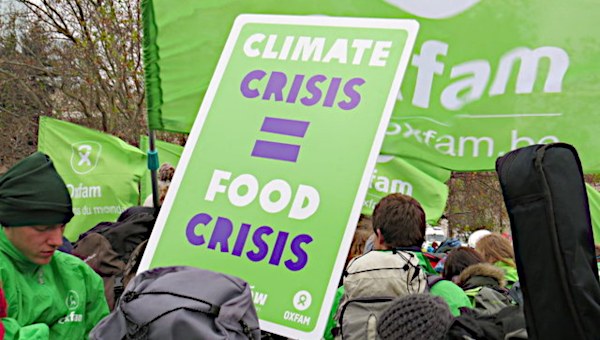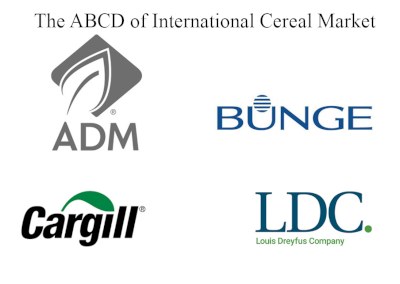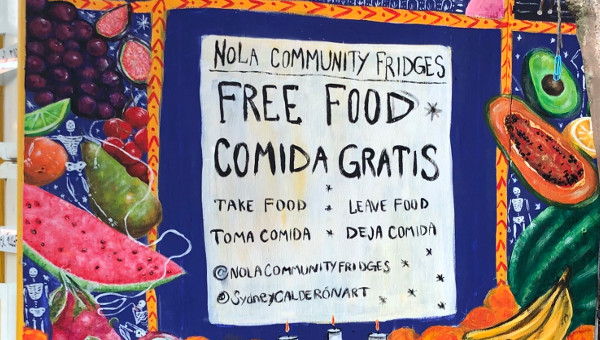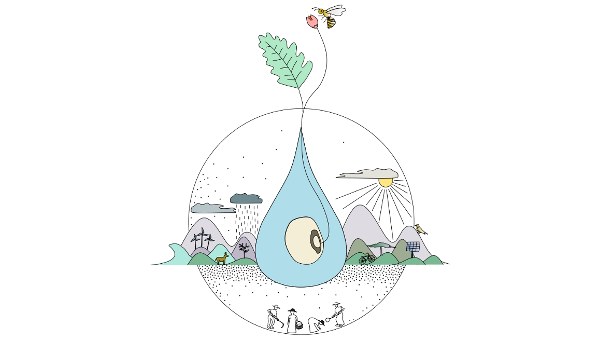International Food Crisis and Proposals to Overcome It
Contrary to a notion that spread in 2022, the global food crisis started before the Russian invasion of Ukraine and the rise in the cereal prices due to speculation. On a global scale, from 2014 to 2021, the number of people affected by serious food insecurity increased by over 350 million, from 565 to 924 million. The rate of increase was particularly sharp from 2019 to 2021, and affected more than 200 million people. In 2021, some 2.3 billion people (29.3% of the world population) experienced moderate or serious food insecurity.1 In 2022, all indicators point to warning. The United Nations Security Council was convened on May 17, 2022 to discuss how to deal with an upcoming food crisis that could lead to popular revolts.
This is the direct consequence of the agribusiness model that aims at garnering profits rather than at feeding the people. It is particularly obvious in countries of the global South where the International Monetary Fund’s (IMF) and the World Bank’s structural adjustment policies have favoured an intensive form of export-oriented agriculture, competitive and profitable on the global market, squeezing out the production of staple foods and peasant agriculture, which produces 70% of the world’s food.2 Food has become a commodity subject to speculation on the world market where a handful of large multinationals decide on prices.

Starving People In the 21st Century
These large agribusinesses benefit from public subsidies, take over more and more land for the expansion of agrofuel production and drain water resources for high-consuming crops, they destroy peasant seeds in favour of hybrids and genetically modified organisms (GMO), and generalize the use of chemical fertilizers and pesticides.
This production model considerably increases the vulnerability of crops to external shocks and hugely contributes to climate change and to droughts that affect rain-fed agriculture and dry-up the water tables. It is part and parcel of the global capitalist system and its many crises of which the food crisis is but one.
How Serious is the Humanitarian Crisis?
One person in ten in the world is permanently hungry. According to a wider standard developed by the FAO and other UN bodies, 30% of the world’s population experience moderate food insecurity. The FAO observes that on the African continent about 60% of the population is affected by moderate food insecurity and 20% by severe food insecurity, and those figures are likely to increase with climate instability.3
In 2020, “an estimated 45 million children under the age of five were suffering from wasting, the deadliest form of malnutrition, which multiplies child mortality rates by up to 12 times. Furthermore, 149 million children under the age of five had stunted growth and development due to a chronic lack of essential nutrients in their diets.”4 45% of the deaths of children under 5 are due to malnutrition, which represents 3.1 million children.
“The gender gap in food insecurity continued to rise in 2021 – 31.9% of women in the world were moderately or severely food insecure, compared to 27.6% of men – a gap of more than 4 percentage points, compared with 3 percentage points in 2020.”5
Unicef announced on 23 June 2022 that almost 8 million children under 5 in 15 crisis-hit countries are at risk of death from severe wasting unless they receive immediate therapeutic food and care… “Since the start of the year, the escalating global food crisis has forced an additional 260,000 children – or one child every 60 seconds – to suffer from severe wasting in the 15 countries bearing the brunt of the crisis, especially in the Horn of Africa and the Central Sahel.” The Unicef also states, “the price of ready-to-use therapeutic food to treat severe wasting has soared by 16 per cent in recent weeks due to a sharp rise in the cost of basic ingredients, 600,000 additional children are without access to life-saving treatment and at risk of death.”
Paradoxically a majority of people suffering from malnutrition are farmers, mainly small producers who do not possess land or not enough, nor the means to develop it, and who must sell as much agricultural produce as possible on the market to pay off their debts depriving their families of food. Of course, there are also the impoverished urban classes.
Émile Frison, a member of the international panel of experts on sustainable food systems (IPES-food) stated in Le Monde: “we must not be misled into believing that the food crisis is the consequence of the COVID health crisis and of the war in Ukraine, and that if those problems are solved, all will be well.” Mathilde Gérard, a journalist with Le Monde added: “Those two major international events actually aggravated previous structural difficulties.”6
Reduction in Production is Not the Cause of the Global Food Crisis
The Global food crisis is not the result of deficient food production. Actually the global food production has increased more rapidly than the world’s population for over half a century. In 2021, the cereal crop reached a record high level. But it has to be emphasized that an increasing part of the food produced is not intended for human consumption.
Governments of the North have supported the production of agrifuel, misleadingly called Green Fuel or biofuel to trigger a positive response among the public. In an article of April 2022, Jean-François Collin, a senior civil servant and former adviser to the French Ministry of Agriculture, highlights:
“the considerable increase in the industrial uses of world cereal production (…), in particular the production of ethanol: 30% of the increase in world production over the last fifty years has been devoted to the development of industrial uses for cereals. This mainly concerns corn but also wheat. (…) Approximately 200 million tons of American corn are processed each year into ethanol for use in automotive fuel. 10% of the cereals produced in the world are now used as fuel. We could add the areas devoted to other crops that are not cereals, such as rapeseed, soya or palm oil, which are used to produce diester, also used as fuel. These are all areas that are not devoted to the production of wheat or rice that could directly feed humans.”
More than one third of the global production of cereals (35%), is destined to be fodder for farm animals.

A handful of transnational corporations control the cereal market, thus forming an oligo-pole, and constantly increase their profits and their assets to the detriment of the interests of the people. On a global level four corporations, three of which are US companies and the other is French, control 70% of the international cereal market. They have a fundamental influence in pricing and supply. They are Archer Daniels Midland, De Bunge, Cargill and Louis Dreyfus, often referred to as ‘ABCD’.
Let us take the case of Cargill. A recent report by Oxfam international stated:
“Cargill is a global food giant and one of the world’s largest private companies. In 2017 it was reported as one of four companies controlling over 70% of the global market for agricultural commodities, and is 87% owned by the 11th richest family in the world. The combined wealth of family members listed on the Forbes billionaire list is $42.9-billion – and their wealth has increased by $14.4-billion (65%) since 2020, growing by almost $20-million per day during the pandemic. This has been driven by rising food prices, especially for grains. Four more members of the extended Cargill family have recently joined the list of the richest 500 people in the world. In 2021, the company had net income of $5-billion and made the biggest profit in its history; the year before it paid out dividends of $1.13-billion, most of which went to members of the family. The company is expected to make record profits again in 2022, adding to the family’s already eye-watering wealth.”
Oxfam’s report adds,
“Cargill is not alone in seeing big profits off the back of food shortages and market volatility, according to Bloomberg. One of the company’s competitors, the agricultural trading house Louis Dreyfus Co., said in March that its profit surged by 82% last year, largely due to grain price fluctuations and strong margins in oilseeds.” (Source: Oxfam Media Briefing Profiting from Pain, published on 23 May 2022.)
Such control over food distribution has allowed those agribusiness corporations, but also large commercial chains such as Wallmart or Carrefour, to impose around 30% price increases in 2021.7
Neoliberal free-trade policies, which we discuss further on, are other deep-lying causes of the food crisis. Indeed they have made countries of the Global South more and more dependent on cereal imports (see below our critical comments on various policies implemented by countries of the South under pressure of institutions such as the World Bank and the IMF but also of their own ruling classes). In case of an external shock leading to a price increase on the world market and/or a supply difficulty, the countries of the Global South, which do not produce enough cereals, are directly affected.
The Food Crisis Did Not Start With the Invasion of Ukraine
Among recent factors that have aggravated the food crisis, we have to mention the huge speculation on cereal markets as soon as Ukraine was invaded by Russia. The prices of wheat and corn increased by almost 50% within two weeks while at the time there had not yet been any destruction of production or supply problem. It was sheer speculation on the part of private corporations stocking up cereals (including future crops) on stock markets (the main one being located in Chicago). The price of rice also increased, though less steeply. Supermarket corporations immediately increased food prices without any reason.
At the moment these lines are written, end of August 2022, over the past three months the price of wheat has decreased by 32% and the price of corn by 22% on the Chicago stock market, but this had no effect on retail prices.
Retail prices for consumers have sharply increased and it is unlikely that they should go down as governments do not enforce a policy of price control or price setting. Large private companies are free to set prices as they see fit.
Actually on a global scale the situation had been deteriorating since 2014. While there had been a serious food crisis in 2007-2008 (see our explanation “Getting to the root causes of the food crisis”) resulting in over 800 million people experiencing hunger, the situation had improved from 2009 to 2013 then again deteriorated since 2014 (see tables 1 and 2 below).
| Table 1: Number of people experiencing food insecurity at a severe level (in millions) | |||||||
|---|---|---|---|---|---|---|---|
| Region | 2014 | 2016 | 2018 | 2019 | 2020 | 2021 | Variation (2021-2019) |
| Africa | 192 | 233 | 247 | 264 | 301 | 322 | 57.8 |
| Asia | 310 | 285 | 368 | 377 | 452 | 489 | 112.3 |
| Latin America and the Caribbean | 47 | 56 | 60 | 64 | 84 | 94 | 29.5 |
| Oceania | 1 | 1 | 2 | 2 | 1 | 2 | 0.4 |
| North America & Europe | 15 | 14 | 11 | 10 | 13 | 17 | 6.9 |
| World | 565 | 588 | 687 | 717 | 850 | 924 | 206.9 |
| Source: FAOThe State of Food Security and Nutrition in the World 2022, table 4, p. 26. | |||||||
Globally, between 2014 and 2021, the number of severely food insecure people increased by more than 350 million, from 565 million to 924 million.
| Table 2: Number of people experiencing food insecurity at a moderate level (in millions) | |||||||
|---|---|---|---|---|---|---|---|
| Region | 2014 | 2016 | 2018 | 2019 | 2020 | 2021 | Variation (2021-2019) |
| Africa | 512 | 603 | 654 | 685 | 751 | 795 | 109.7 |
| Asia | 774 | 794 | 960 | 980 | 1197 | 1151 | 171.0 |
| Latin America and the Caribbean | 152 | 195 | 202 | 205 | 258 | 268 | 62.5 |
| Oceania | 5 | 5 | 6 | 6 | 5 | 6 | -0.1 |
| North America & Europe | 102 | 96 | 84 | 80 | 87 | 89 | 9.5 |
| World | 1544 | 1693 | 1906 | 1956 | 2298 | 2309 | 352.6 |
| Source: FAOThe State of Food Security and Nutrition in the World 2022, table 4, p. 26. | |||||||
Can Hunger Be Eradicated?
Eradicating hunger is perfectly possible. Solutions to achieve this vital objective demand a project of food sovereignty radically different from the intensive agribusiness model. Food sovereignty refers to the right of each country to maintain and develop its own capacity to produce its staple food. It assumes the protection of natural resources, notably land, water and seeds. Food producers, distributors and consumers are to be put at the heart of food systems and policies rather than the demands of markets and transnational corporations, feeding the people by local producers, while reducing imports and exports.
Food sovereignty can only be achieved if agro-ecology underpins governments’ decisions. Agro-ecology is an alternative to the productivist neoliberal model. It guarantees the collective rights of peasants, protects biodiversity, strengthens local food systems, and values the literally vital work done by the women.
It would supply quality food: without GMOs, without pesticides or herbicides, without chemical fertilizers. Yet to reach this objective, over three billion peasants must gain access to enough land and farm for themselves rather than enrich large landowners, agribusiness transnationals, traders and lenders. They must also have access to public subsidies to farm the land, and without exhausting it.
Land reform is needed, it is still sorely wanting whether in Brazil, Bolivia, Paraguay, Peru, Asia or in some African countries. Such a reform must organize the redistribution of land, prohibit large private estates, and supply public support to farmers. It must counter the land policies enforced by the World Bank, trusts such as the Bill & Melinda Gates Foundation and multinationals that favour large-scale operations of land-grabbing.
It must preserve existing forests and encourage reforestation, stop the privatization and commodification of water resources, avoid single crops that exhaust the soil… It has to be emphasized that the IMF and the World Bank have a huge responsibility in the food crisis since these institutions insisted that countries become more and more dependent on international markets, canceled help to small farmers and offered most favoured advantages to agribusiness transnationals. The IMF and the WB advised governments in the South to eliminate grain silos that were used to supply the domestic market in the event of a supply shortage and/or price explosion. The World Bank and the IMF have pushed Southern governments to abolish public credit agencies for farmers and have pushed these into the clutches of private lenders (often large traders) or private banks that charge usurious rates. This has led to massive debts among small farmers, whether in India, Mexico, Egypt or several countries in Sub-Saharan Africa.
According to official surveys over-indebtedness among Indian peasants is the main cause of suicide of nearly 400,000 farmers in India over the past 25 years. India is precisely one of the countries where the World Bank convinced public authorities to suppress public lending to farmers. Over the past 50 years the WB and the IMF also pressed tropical and other countries of the South into replacing their production of wheat, rice or corn with export crops such as cocoa, coffee, tea, bananas, peanuts, flowers, cotton or cane sugar. To complete their labour in favour of agribusiness corporations and countries exporting cereals (starting with the US, Canada and Europe), they pushed governments to open their markets to food imports that, in the North, are largely subsidized leading many producers in the South into bankruptcy and causing a steep reduction of local food production.
To sum up, we have to implement food sovereignty, promote agro-ecology and introduce land reforms. We must stop producing industrial agro-fuel and ban public subsidies to those who produce it. We must recreate public food reserves (particularly cereals: rice, wheat, corn…), (re)create public credit agencies for farmers and regulate food prices. We must make sure that low income populations can have access to quality food at low prices. We must cancel VAT on staple foods. The State must guarantee small farmers sufficiently good prices to allow them to significantly improve their living conditions. The State must also develop public services in rural areas such as health care, education, communications, culture, or seed banks. Public bodies are perfectly able to guarantee both subsidized prices for food consumers and sufficiently high selling prices for farmers to bring in a sufficient income.
Struggle Against Hunger Part of a Much Wider Struggle
Indeed we cannot seriously claim that we are fighting hunger without getting to its root causes. Debt is one of them and the various announcements on this issue, which have been frequent in recent years, such as during the G7 or G20 summits, do not hide the fact that hunger remains an unresolved problem. The current global crisis makes the debt situation of developing countries even worse and new debt crises are in the offing. The events in Sri Lanka or Argentina in 2022 are glaring examples. This debt has led peoples of the South, who could otherwise rely on significant human and natural resources, into massive poverty. The debt system is organized plunder which must be stopped.
Indeed the infernal mechanism of illegitimate public debt is a principal obstacle to the satisfaction of basic human needs, including access to decent food. Without a doubt, the satisfaction of basic human needs must take precedence over any other consideration, whether geopolitical or financial. From a moral perspective, the rights of creditors, landlords or speculators are a mere trifle in contrast to the fundamental rights of eight billion citizens, trampled on by the implacable mechanism of debt.
It is immoral to demand that people in countries impoverished by a crisis they are not responsible for devote a large part of their resources to repay well-to-do creditors (whether in the North and in the South) rather than to meet their basic needs. The immorality of the debt is often a consequence of its having been contracted by non-democratic regimes that have not used the loans in the interest of their populations and organized large-scale embezzlement with the tacit or explicit approval of countries in the North, private creditors, the World Bank and the IMF. Creditors of industrialized countries have often knowingly lent to regimes that are corrupt. They have no right to demand that the people pay back these immoral and illegitimate debts.
To put it in a nutshell, debt is one of the main mechanisms through which a new kind of colonization operates. It comes on top of the historical violations already committed by rich countries: slavery, extermination of indigenous populations, colonial yoke, plundering of raw materials, of biodiversity, of farmers’ know-how (through the patenting of agricultural products from the South, such as Indian basmati rice, for the benefit of agribusiness transnationals from the North) and of cultural goods, brain drain, etc. It is high time, in a concern for justice, to replace the logic of domination by a logic of redistribution of wealth.
The G7, the IMF, the World Bank and the Paris Club impose their own versions of truth and justice, of which they are both judge and party. Since the crisis of 2007-2009, the G20 has taken over from the G7 and has contributed to putting the discredited and delegitimized IMF back at the center of the political and economic game, particularly with regard to the Global South. We must put an end to this injustice which benefits the oppressors, whether they are from the North or the South. •
The Committee for the Abolition of Illegitimate Debt (CADTM) wholeheartedly supports the proposals and demands formulated by the international peasant movement La Via Campesina to face the current food crisis and move toward food sovereignty.
Faced with this dramatic context, La Via Campesina voices strong demands and proposals to address the crises, both in the short and the longer terms.
We demand immediate action to:
- end speculation on food and the suspension of the trading of food products on commodity markets. Speculation on agricultural futures should be immediately forbidden. The price of food traded internationally should be linked with the costs of production and follow the principles of fair trade, both for producers and for consumers;
- end the WTO’s control of the food markets and keep agriculture out of free trade agreements. In particular, WTO’s criminal rules that prevent countries from developing public food stockpiles, and market and price regulation should be immediately removed, so that countries can develop the necessary public policy to support small-scale food producers in this challenging context;
- call an emergency meeting of the Committee on Food Security and the creation of a new international body to conduct transparent negotiations on commodity agreements between exporting and importing countries so that countries which have become dependent on food imports can have access at an accessible price;
- forbid the use of agricultural products to produce agrofuel or energy. Food should be an ab-solute priority over fuel;
- introduce a global moratorium on the payment of public debt by the most vulnerable countries. In the current context, pressuring some very vulnerable countries to pay the debt is highly irresponsible and leads to social, economic, and food crises. Put an end to IMF’s pressures to dismantle national public policies and public services. We call for the cancellation of the illegitimate external public debt in developing countries.
We demand radical changes in international, regional and national policies to re-build food sovereignty through:
- a radical change in the international trade order. The WTO should be dismantled. A new global framework for trade and agriculture, based on food sovereignty, should open the way for strengthening local and national peasant agriculture, to ensure a stable basis for a relocalized food production, the support for local and national peasant-led markets, as well as to provide a fair international trading system based on cooperation and solidarity rather than competition and speculation;
- The implementation of popular and integral agrarian reform, to put an end to the grabbing of water, seeds and land by transnational corporations (TNCs), and ensure small-scale producers fair rights over productive resources. We protest against the privatization and grabbing of territories and commons by corporate interests under the pretext of environ-ment protection, through carbon markets or other biodiversity off-sets programs, without consideration for the people who are living on these territories and who have been taking care of the commons for many generations;
- A radical shift towards agroecology to produce healthy food in quantity and quality for the whole population. We must bear in mind that the climate and environmental crisis will be our great challenge in this current context. We must face the challenge of producing enough quality food while reviving biodiversity and drastically reducing GHG emissions.
- effective regulation of the market of inputs (such as credits, fertilizers, pesticides, seeds, fuel) to support peasants’ capacity to produce food, but also to ensure a fair and well-planned transition toward more agroecological farming practices;
- A food governance based on local production, not on TNCs. At the global, regional, nation-al and local levels, the capture of food governance by TNCs should be stopped, and the interests of the peoples should be prioritised. The vital role of small producers should be recognized in all bodies dealing with food governance;
- The transformation of the UN Declaration on the Rights of Peasants into a legally binding instrument for the defence of rural peoples.
- The development in every country of public stockpiling capacities. The strategy of food stockpiling should be held both at the national level but also through the creation and public support of food reserves at the community level with locally produced food coming from agroecological farming practices;
- a global moratorium on dangerous technologies that threaten humanity, such as geo-engineering, GMOs or cellular meat. The promotion of low-cost techniques that increase peasant autonomy and their use of their own seeds.
- the development of public policies to ensure new relationships between those who produce and those who consume food, those who live in rural areas and those who live in urban are-as, guaranteeing fair prices based on the cost of production, allowing a decent income for all those who produce in the countryside and a fair access to healthy food for the consumers;
- the promotion of new gender relations based on equality and respect, both for people living in the countryside and among the urban working class. Violence against women must stop now. •
This article first published on the cadtm.org website.
Endnotes
- Food and Agriculture Organization of the United Nations (FAO), “The State of Food Security and Nutrition in the World (2022).”
- The FAO states that “family farmers, … produce over 70 per cent of the world’s food-and over 80 per cent in developing countries.” See the end of this statement.
- For definitions of these terms, see FAO, “The State of Food Security and Nutrition in the World (2022),” p. 204.
- Press release by the World Health Organization, 6 July 2022.
- Ibid.
- Mathilde Gérard, “Sous-alimentation: près d’une personne sur dix souffre de la faim dans le monde, un chiffre en forte hausse depuis deux ans,” Le Monde, 6 July 2022.
- Oxfam Media Briefing, Profiting from Pain. The urgency of taxing the rich amid a surge in billionaire wealth and a global cost-of-living crisis, published on 23 May 2022, p. 6.





